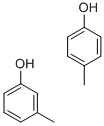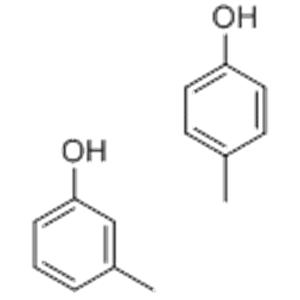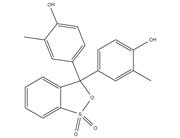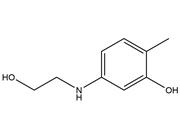1. Product information
| Product Name: | Cresol |
| Synonyms: | Cresol m/p mixture;CRESYLIC ACID;HYDROXYTOLUENE;M,P-CRESOL;Cresol;Tar acids, methylphenol fraction Distillate Phenols;Einecs 284-892-9;METHYLPHENOL TRICRESOL |
| CAS: | 84989-04-8 |
| MF: | C7H8O |
| MW: | 108.14 |
| EINECS: | 284-892-9 |
| Product Categories: |
|
| Mol File: | 84989-04-8.mol |
 |
|
| Cresol Chemical Properties |
| density | 1.04 |
| Fp | 82 °C |
| Dielectric constant | 9.0(Ambient) |
| CAS DataBase Reference | 84989-04-8(CAS DataBase Reference) |
| Hazard Codes | T |
| Risk Statements | 20-24/25-34-52/53-68-45 |
| Safety Statements | 26-36/37/39-45-61-53 |
| RIDADR | UN 2076 6.1/PG 2 |
| WGK Germany | 1 |
| F | 8-23 |
| Provider | Language |
|---|
| ACROS | English |
| SigmaAldrich | English |
|
| Cresol Usage And Synthesis |
| General Description | Cresol is obtained from petroleum or coal tar as a combination of 3 stereoisomers (molecules with a similar type and count of atoms but with distinct atom arrangements). This combination is also referred to as cresylic acid. Each isomer is highly toxic and when one is exposed to high concentrations of the isomers. Cresol may also be referred to as tricresol, M, P-Cresol, methylphenol tricresol, methyl phenol, hydroxytoluene, cresylic acid, cresol m/p mixture or Meta Para Cresol. In low concentrations, the isomers are effective antiseptics and disinfectants. The cresols are an essential constituent of creosote, a wood preservative which is obtained through distillation as a by-product of coal tar. Cresols can also be used in the production of photographic development materials and explosives (m-Cresol) and can also be transformed into butylated hydroxytoluene (BHT), an essential antioxidant in foods. |
| Physical and Chemical Properties | Cresol has a molecular weight of 108.14 g/mol and an exact mass of 216.115 g/mol, which is also its monoisotopic mass. It has a density of 1.04 and a final boiling point of 820 C. It has a topological surface area of 40.5 A^2, a complexity of 134 units and a heavy atom count of 16. |
| Precautions | Cresol is harmful when inhaled, ingested or when it comes into contact with the skin, it may result in acute nasal, oral and dermal irritation. It may cause acute eye damage and skin burns/irritation. It may also influence genetic defects and it has long-lasting hazardous effects on the environment. |
| Safety Statements | If the compound comes into contact with one’s eyes, they should rinse it off thoroughly with plenty of water before consulting a doctor. One should always wear protective gear when handling the product. It is also essential to avoid exposure or to seek special instruction prior to handling the compound. |
| Chemical Properties | Colorless to slightly yellow liquid |
| Uses | Antiseptic; antimicrobial preservative. |
2. Packaging
For powders: normal is 25kgs/Drum or bag, or larger/smaller package as request.
For liquids: normal 25kgs/drum, 180-300kgs/bucket, or IBC, determined by the nature of the product.
Or smaller package 1kg/bottle, 10kgs/bottle as request.


3. Shipping

4. Contact information
For more details, pls contact us freely.
Email address : elin@fdachem.com
Mob: 86 13613820652
WhatsApp/Skype/Wechat/LINE: 86 13613820652



 China
China






